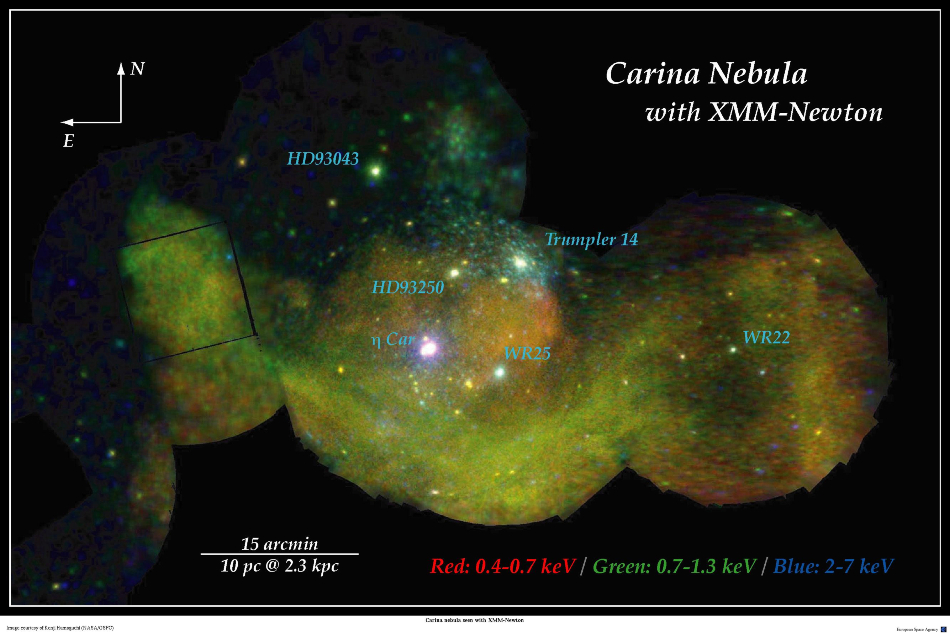
 Credit:Kenji Hamaguchi (CRESST/USRA/NASA/GSFC) and ESA
Credit:Kenji Hamaguchi (CRESST/USRA/NASA/GSFC) and ESA
Big Burst
What would a starburst look like if you could see it up close? Probably a lot like the Carina Nebula, a rather small region of one of the Galaxy's spiral arms, a complex of massive clouds of gas and dust, and a region where, about a million or two years ago, for some reason and extraordinary amount of very massive stars formed. And at only some 8500 lightyears distant, it's relatively nearby. Such regions are of great interest to astronomers, since they are very young, and they show how massive stars form and how they create and disperse the elements necessary for life. The image above is a beautiful new study of the Carina Nebula in X-rays, taken by the XMM Newton X-ray observatory. The X-ray colors represent X-ray energy, as usual: red means low energy X-ray emission, green is somewhat higher in energy than red, and blue somewhat higher than green. Thus blue objects are either very high energy objects, or else very absorbed objects. Most of the point sources are massive stars, some X-ray emitting binaries, and some objects still to be identified. The clustering of the X-ray point sources is very evident, showing how massive stars like to form in groups. A number of interesting sources are identified. Interestingly, the Carina Nebula is immersed in a large diffuse glow of X-radiation. This X-ray glow might be produced by the combined winds of the massive stars colliding with the dense cold clouds in the nebula. Another interesting possibility: perhaps this emission represents an old supernova. But if so which star died?
<
HEA Dictionary ● Archive
● Search HEAPOW
● Other Languages
● HEAPOW on Facebook
● Download all Images
● Education ● HEAD
>
Each week the HEASARC
brings you new, exciting and beautiful images from X-ray and Gamma ray
astronomy. Check back each week and be sure to check out the HEAPOW archive!
Page Author: Dr. Michael F. Corcoran
Last modified Monday, 26-Feb-2024 17:44:44 EST


